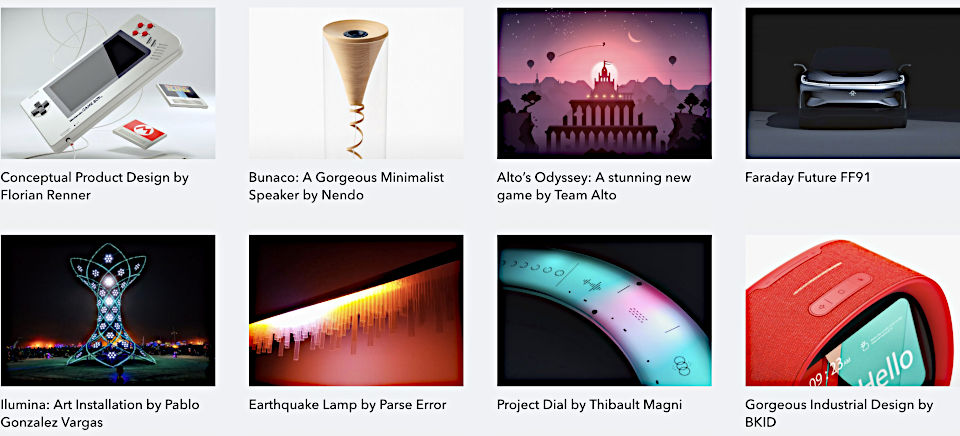Ideenentwicklung
Das Spiel mit der Angst
Das Spiel mit der Angst

Technologie ist eine wichtige Inspirations-Quelle für Designer*innen. Allerdings wird dabei oft viel mehr an das Wie als an das Warum gedacht…

Old Car von Max Benidze
Die Technikgeschichte weiß um das grundsätzliche Dilemma der Ingenieure und Wissenschaftler: Ihre Hervorbringungen können die Welt besser machen - aber auch das Gegenteil bewirken. Die Technik ist etwas zwischen Goethes Zauberlehrling, Düsentriebs Helferlein und dem Golem, weshalb auch die gesellschaftliche Rezeption technologischer Evolution stets gewisse Muster zeigt: Die Reaktionen reichen von Euphorie bis Untergangsskeptizismus, von bedingungsloser Zustimmung bis vorverurteilender Ablehnung.

Angesichts des ungeheuren Erfolgs von Airbnb gab es auch immer wieder Kritik. Städte wie Berlin beklagten schon vor Jahren die massenweise Umwidmung von Wohnungen in Ferienunterkünften. Auch Hoteliers sind wenig begeistert über die meist viel preiswerteren Privatunterkünfte.
HUMAN is a collection of stories and images of our world, offering an immersion to the core of what it means to be human. Through these stories full of love and happiness, as well as hatred and violence, HUMAN brings us face to face with the Other, making us reflect on our lives. From stories of everyday experiences to accounts of the most unbelievable lives, these poignant encounters share a rare sincerity and underline who we are – our darker side, but also what is most noble in us, and what is universal.
Human-centered design is a creative approach to problem solving […]. It’s a process that starts with the people you’re designing for and ends with new solutions that are tailor made to suit their needs. Human-centered design is all about building a deep empathy with the people you’re designing for; generating tons of ideas; building a bunch of prototypes; sharing what you’ve made with the people you’re designing for; and eventually putting your innovative new solution out in the world.
Physiologically, there has been no significant improvement in our tool-making capacity over the last 30,000 years. Albert Einstein was far less dexterous with his hands than was an ancient hunter-gatherer. However, our capacity to cooperate with large numbers of strangers has improved dramatically. The ancient flint spearhead was manufactured in minutes by a single person, who relied on the advice and help of a few intimate friends. The production of a modern nuclear warhead requires the cooperation of millions of strangers all over the world – from the workers who mine the uranium ore in the depths of the earth to theoretical physicists who write long mathematical formulae to describe the interactions of subatomic particles.
HARARI, Yuval Noah: Sapiens: A Brief History of Humankind
Divided into four distinct phases – Discover, Define, Develop and Deliver – the Double Diamond is a simple visual map of the design process.
In all creative processes a number of possible ideas are created (‘divergent thinking’) before refining and narrowing down to the best idea (‘convergent thinking’), and this can be represented by a diamond shape. But the Double Diamond indicates that this happens twice – once to confirm the problem definition and once to create the solution.
… das ist nur ein Vorschlagt für Euer Projekt – bitte entscheidet selbst, ob der Zeitplan für Euch sinnvoll ist!
… und das alles innerhalb von 7 Tagen …
Weil wir nach tief verborgenen, bisher unerfüllten Bedürfnissen suchen, müssen wir erst durch jene Bedürfnisse „hindurchfragen“, die für den Nutzer offensichtlich und leicht zu benennen sind.
Digital Innovation Playbook, Seite 80
Wie bei einer Zwiebel müssen wir mit geschickten Fragen Bedürfnisschicht um Bedürfnisschicht freilegen, bis wir an den Kern – das heißt in das Innerste des Menschen – stoßen.

Warum-Fragen müssen sein. Sie sind das Salz in der Interview-Suppe!
Digital Innovation Playbook, Seite 40
Menschen können sehr schlecht ihr eigenes Verhalten in Gänze beschreiben. Wenn wir aber immer wieder nachhaken, dann bringen wir sie dazu, über ihr Verhalten nachzudenken.
Wenn wir das erste Mal die Warum-Fragen mehrfach stellen, werden wir uns dumm vorkommen. Aber ohne Nachfragen und Nachbohren kommen wir den tiefer liegenden Erkenntnissen nicht auf die Spur!
Eine wichtige Fähigkeit von Designer*innen ist es, wieder wie Kinder zu sehen – aber auch wie Kinder Fragen zu stellen!
Charles and Ray Eames | Powers of Ten, 1977
Powers of Ten is a reframing technique that can be used as a synthesis or ideation method. It allows the design team to use an intentional approach to considering the problem at varied magnitudes of framing.
Das Problem aus verschiedensten Perspektiven betrachten – mal ganz nah dran, mal aus großem Abstand…
Answering in his infectious, culturally omnivorous style, using his fluency in fields from neurobiology to popular culture, Johnson provides the complete, exciting, and encouraging story of how we generate the ideas that push our careers, our lives, our society, and our culture forward.
Steven Johnson: Where Good Ideas Come from
ISBN: 978-1594485381
…und viel Erfolg bei Projekten!